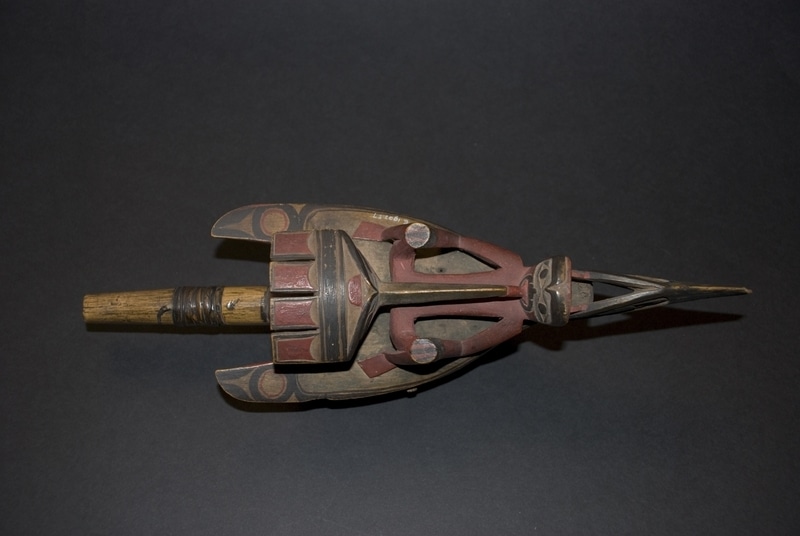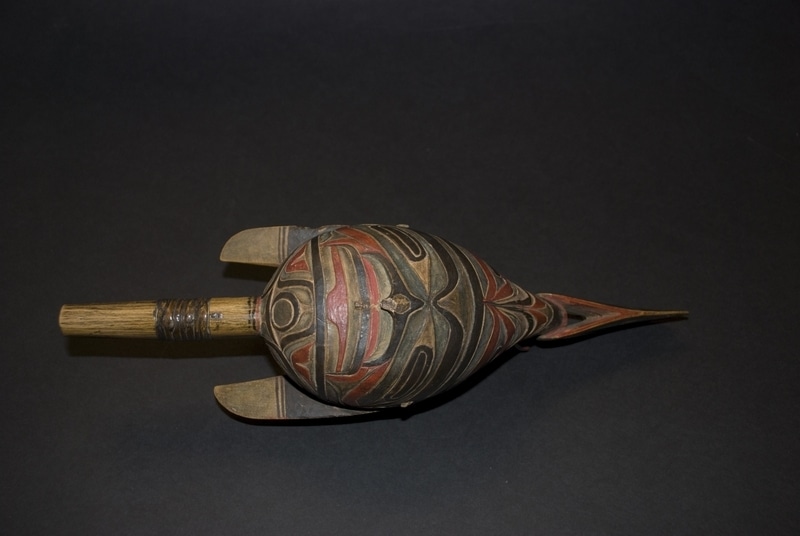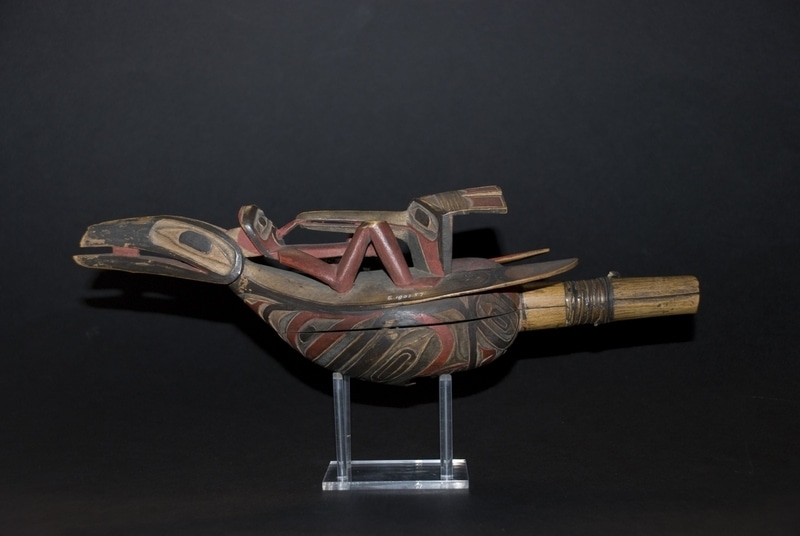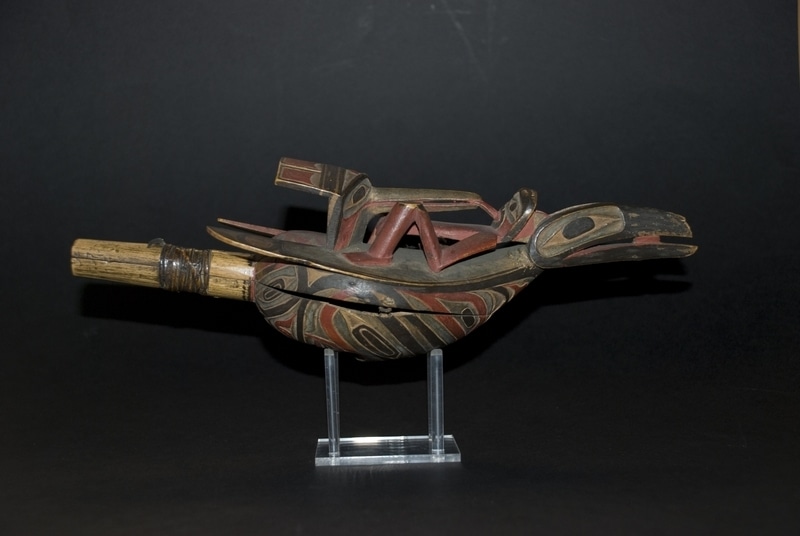Rattle Item Number: E 1903.57 from the MAA: University of Cambridge




Description
The catalogue card states, A ceremonial rattle of magical powers, with painted carving in relief, depicting the legend of Ka-ka-tele, the whistling demon. This description refers to a raven rattle. The tip of the raven' s beak is slightly broken, but it is holding a small red block - the sun according to myths. Lying on the raven' s back is a red humanoid figure which has its hands on its knees and legs spread. The humanoid figure shares a tongue with a long thin beaked bird. The bird could be a kingfisher as it has a four feather plumage extending from the rear of its head. The belly of the raven is expertly carved and painted with elaborate U-forms and ovoids which form a hook nosed creature, possibly a hawk, but highly ambiguous. The tips of the raven' s wings extend towards the back of the rattle, and the handle is wrapped with cherry bark.; Good
Context
The style of this rattle suggests it is Tlingit in origin (G.Crowther). The original European tribal names and, where possible, current tribal names have both been given in separate GLT fields.; The raven rattles are known to have been chiefs dancing rattles, and were held what we would consider to be upside down, with the raven on the underneath, in order to prevent the bird from taking flight. The meaning of the projecting tongue linking the humanoid and the bird has long fascinated anthropologists, with interpretations concentrating on sexual imagery and the transference of power. However it cannot be accurately stated what the true meaning is, indeed it may be intentionallyopen to many meanings (G.Crowther).; Exhibited: Old Anthropological displays at CUMAA, case 21 and 22, dismantled 081986. New Anthropological displays, square case, 1990-.
Item History
- Made in British Columbia, Canada
- Received from Anatole von Hgel during 1903
Who
- Culture
- Tlingit ?
- Received from
- Anatole von Hgel
Where
- Holding Institution
- MAA: University of Cambridge
- Made in
- British Columbia, Canada
When
- Acquisition Date
- during 1903
Other
- Keyword
- Music; Masques and Drama; Ceremonial Objects